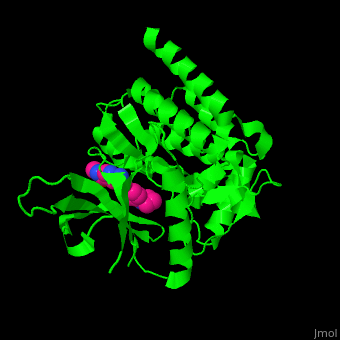Function
Janus kinase or tyrosine-protein kinase JAK (JAK) are nonreceptor tyrosine kinases which transduces cytokine-mediated signals via the JAK-STAT pathway. The JAK-STAT pathway transmits signals through the cell membrane to DNA promoters thus causing transcription. The name JAK is derived from Just Another Kinase. JAK proteins contain 2 phosphate-transfer domains, one with kinase activity using a phosphotyrosine (PTyr) and the other a pseudokinase domain which negatively regulates the kinase domain. JAK contains seven Janus homology domains named JH1-7. JAK family members are JAK1, JAK2, JAK3 and TYK2[1].
JAK1 and TYK2 are involved in signaling by members of type I and type II cytokine receptors.
JAK2 is involved in signaling by members of the interferon receptors (type II cytokines).
JAK3 is predominantly active in immune cells. JAK3 is activated by cytokines whose receptors contain the common γ chain subunit (interleukin 2,4,7,9,15,21).
TYK2 is a component of type I and type III interferon signaling pathways.
See Tyrosine kinase.
Relevance
Jak3 inhibitors are tested in treatment of autoimmune diseases and transplant rejection[2].
Disease
Mutations in Jak2 are associated with chronic myeloproliferative neoplasms, polycythemia vera, essential thrombocytosis and primary myelofibrosis[3]. Mutations in Jak3 are associated with immune deficiency.
Structural highlights
Jak2 containing binds the in the ATP-binding pocket[4]. Water molecules shown as red spheres.
3D Structures of Janus kinase
Janus kinase 3D structures

